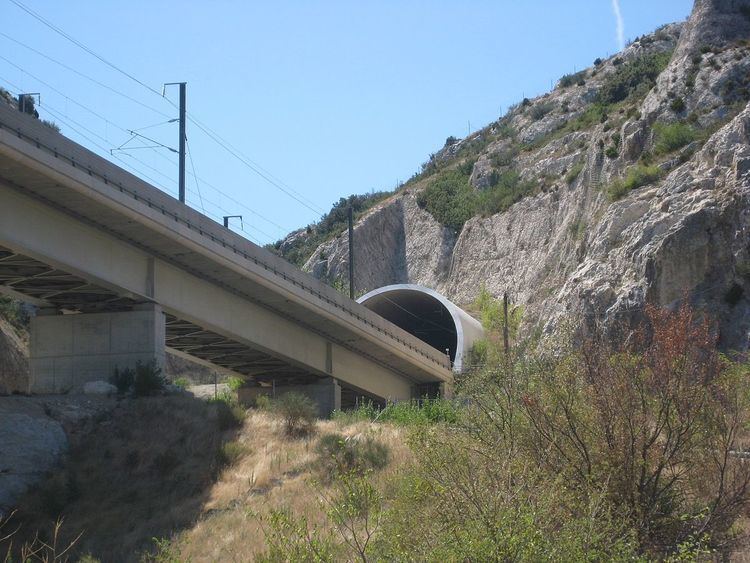 | ||
Tunnel boom refers to a loud boom sometimes generated by high-speed trains when they exit tunnels. These shock waves can disturb nearby residents and damage trains and tunnel structures. The perception of this sound by humans is similar to that of a sonic boom from supersonic aircraft, but unlike a sonic boom, tunnel boom is not caused by trains exceeding the speed of sound (this is not possible even for the fastest high-speed trains currently in operation). Instead, tunnel boom results from the fact that the structure of the tunnel prevents the air around the train from escaping in all directions. As a train passes through a tunnel, it generates compression waves in front of it. These waves coalesce into a shock wave that generates a loud boom when it reaches the tunnel exit.
Tunnel boom can disturb residents near the mouth of the tunnel, and it is exacerbated in mountain valleys where the sound can echo. Reducing these disturbances is a significant challenge for high-speed lines such as Japan's Shinkansen and the French TGV. Methods of reducing the phenomenon include making the train's profile highly aerodynamic, adding hoods to tunnel entrances, and installing perforated walls at tunnel exits.
Tunnel boom has become a principal limitation to increased train speeds in Japan where the mountainous terrain requires frequent tunnels. Japan has created a law limiting noise to 70 dB in residential areas, which applies to many tunnel exit zones.
